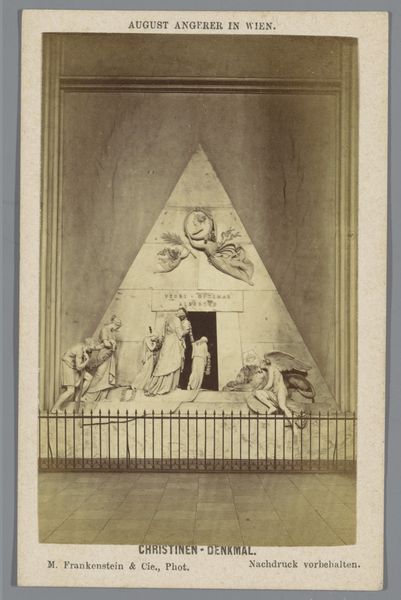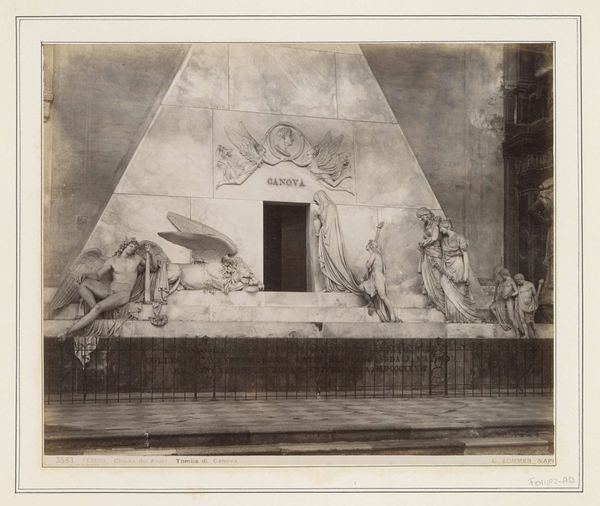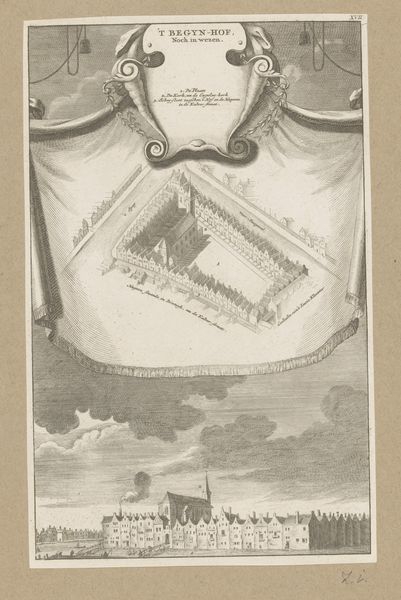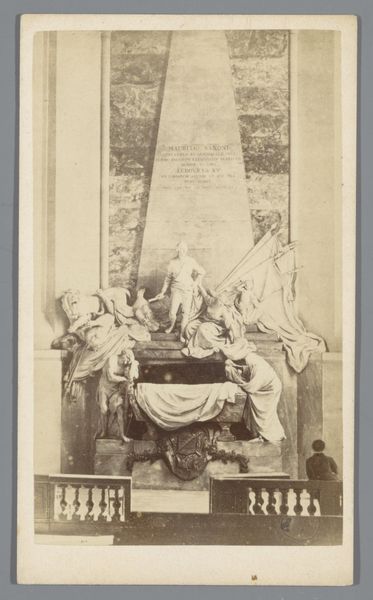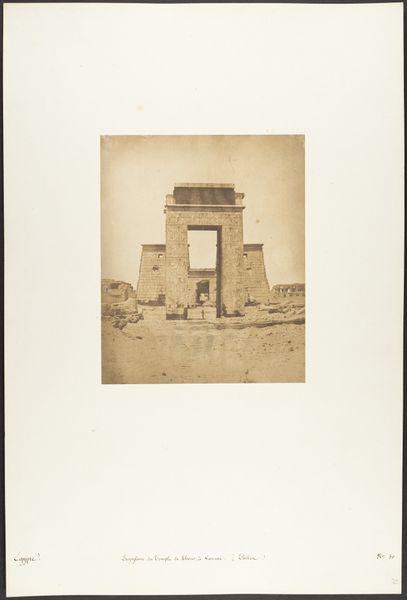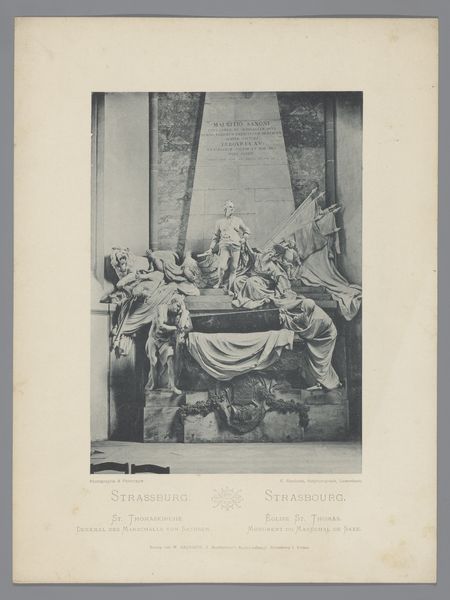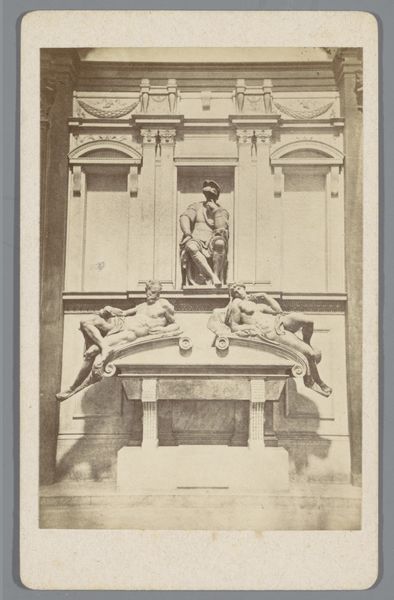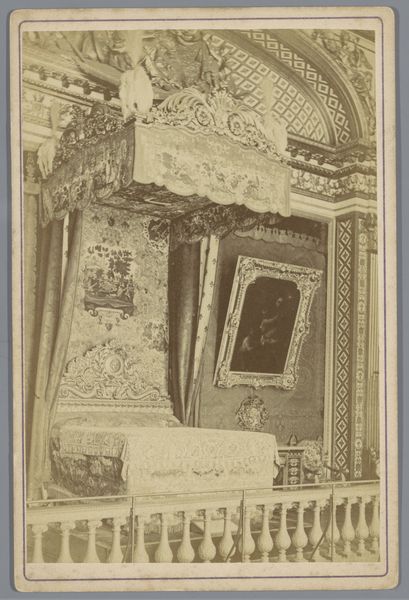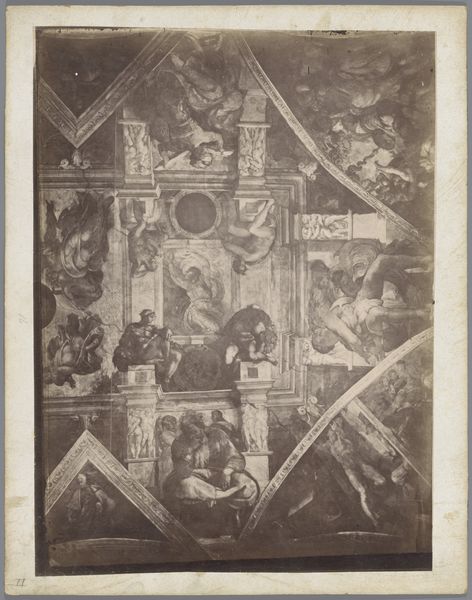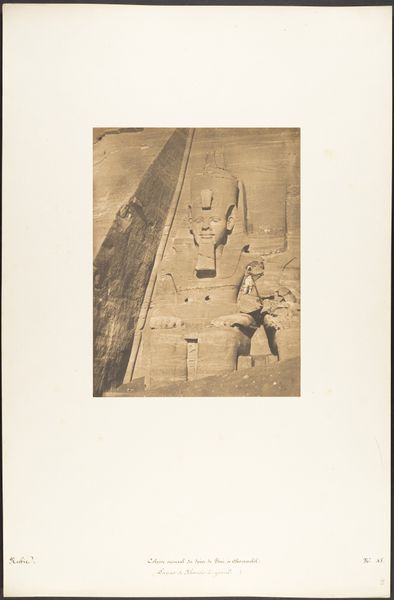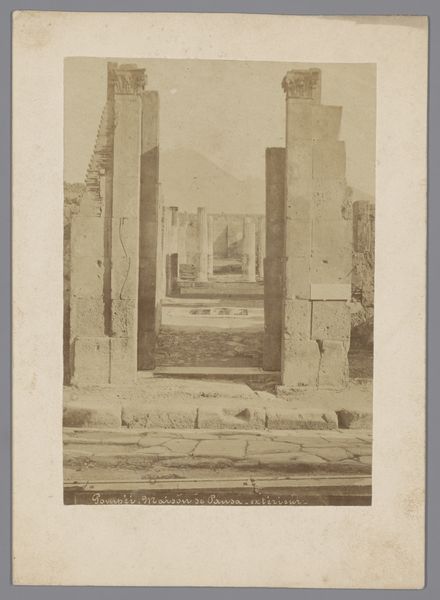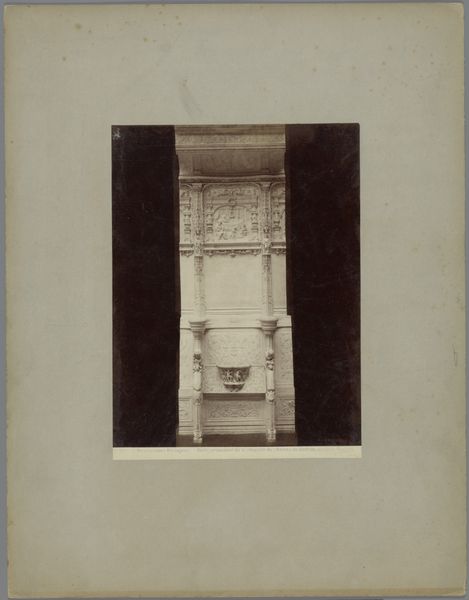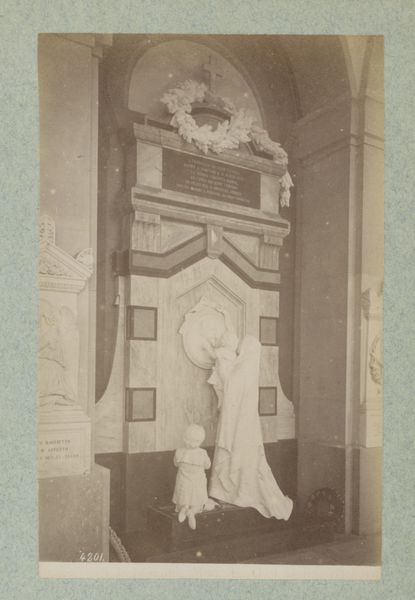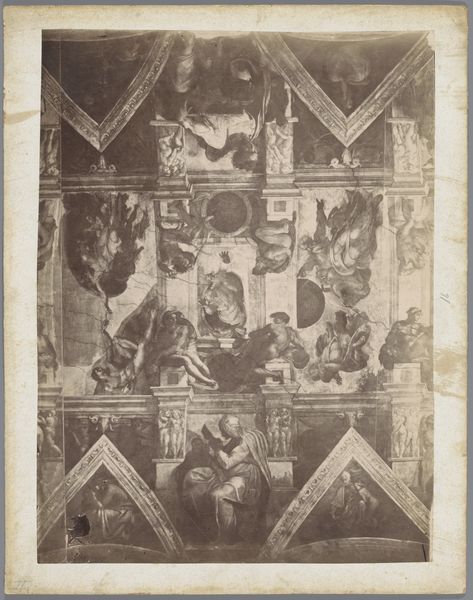
Het grafmonument van Antonio Canova in de Basilica Santa Maria Gloriosa dei Frari in Venetië 1850 - 1900
0:00
0:00
Dimensions: height 157 mm, width 104 mm
Copyright: Rijks Museum: Open Domain
This photograph captures Antonio Canova's tomb in the Basilica di Santa Maria Gloriosa dei Frari in Venice. Although the photograph is by an anonymous maker, Canova himself designed his own tomb prior to his death in 1822, which was then constructed by his students. Canova was the pre-eminent Neoclassical sculptor of his time. He was known for his idealized representations of the human form that often drew from classical mythology. In his tomb, the heavy, imposing pyramid evokes the grandeur of ancient Egyptian monuments. Consider that Canova designed his own tomb. The pyramid becomes a powerful statement about legacy and self-perception. Canova's choice to model the tomb after Egyptian forms, reflects his own view of his importance as an artist but also the West’s cultural obsession with Egypt at the time. It asks us to consider how artists shape their own narratives, even beyond their lifetimes, in relation to the cultures they draw inspiration from.
Comments
No comments
Be the first to comment and join the conversation on the ultimate creative platform.
